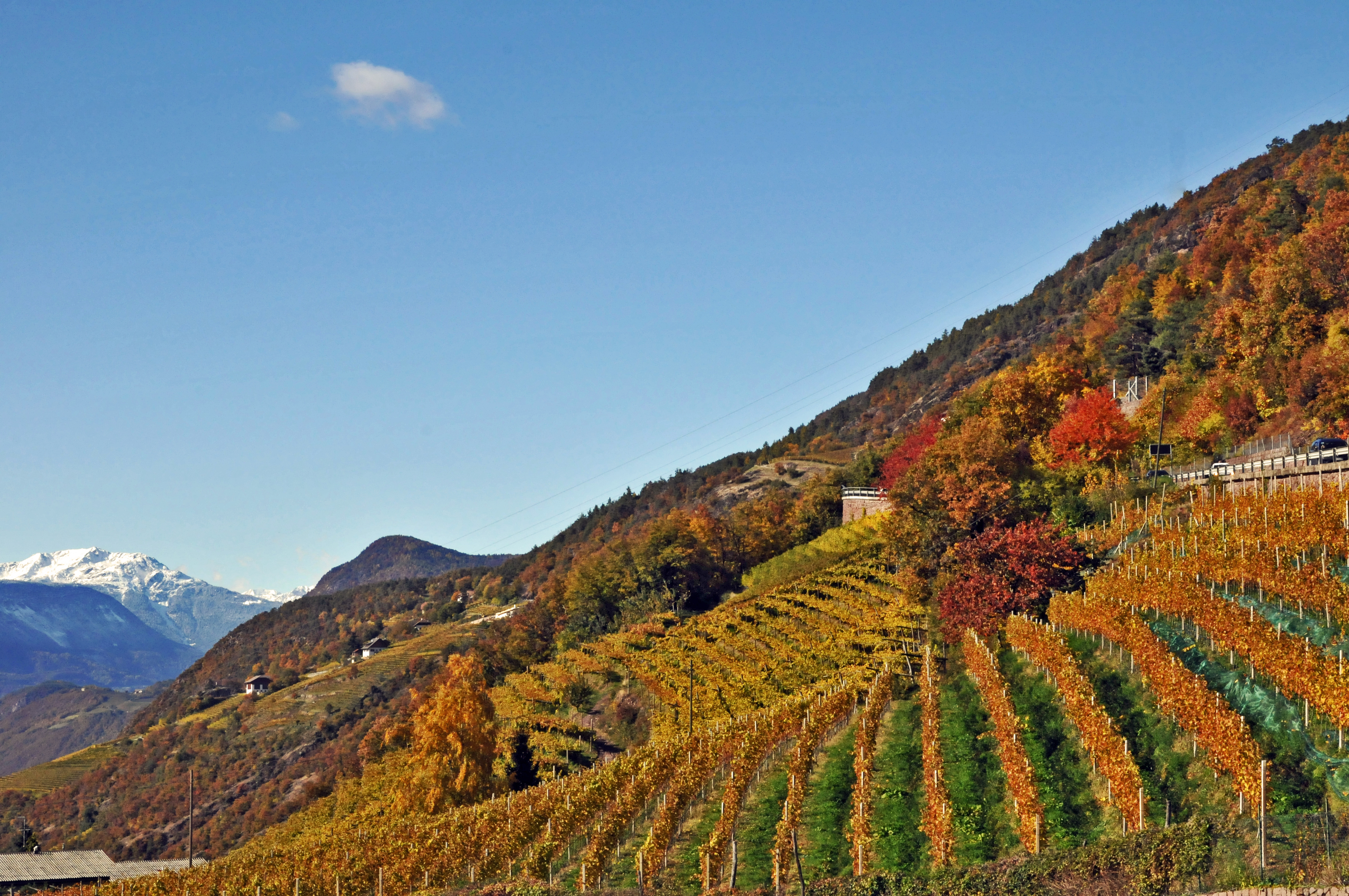Alto Adige, a wine producing region residing in the northernmost reaches of Italy, sitting just due east of the center, and producing a whopping <1% of the country’s wine production, a small, yet world-renowned region for wine production. The region is known for its Austrian influences not only on the grapes, but on the local language as well. The area was set up as an autonomous entity from the large swash of Italy (as few other regions in the country have been set up) to preserve local heritage and language. For a large part of history the area had been under Austro-Hungarian rule which had been preceded by Roman rule with a winemaking history predating the Roman occupancy.
The Alto Adige region resides in the southern Alps and Dolomites. With it’s situation to the mountains, the region as a whole has a surprisingly Mediterranean climate that allows for a wide variety of red and white grapes to be grown (barring a few zones that have colder climates, and in turn specialize in white wines).
Alto Adige production as a whole favors white wines at around 58% of production and 42% for red wines. A list of notable varietals shows the influence of Austrian and other European winemaking and reads away from any other winemaking region in the country: Pinot Bianco (Pinot Blanc), Sauvignon (Blanc), Gewürztraminer, Riesling, Müller Thurgau, Sylvaner, Chardonnay, (Grüner) Veltliner, Merlot, Cabernet (Sauvignon), and Pinot Nero (Pinot Noir) amongst others. That said, there are a few you might recognize as Italian: Pinot Grigio and Moscato for example. The two outliers are the region’s native red grapes, Lagrein and Schiava.
In the region there are 8 DOCs. While the land mass of Alto Adige is large, it is dominated by the mountains and foothills which make a lot of hands on work for winemakers who need to terrace slopes and use environmentally sound techniques to contain yields and retain local flora and fauna, and hence the growing regions are quite controlled and small as you will see below:
- Alto Adige/Südtiroler: 4,088 hectares are cultivated in the DOC. A blanked designation encompassing all of the Alto Adige growing areas. All common grapes can carry this designation. In this area the variety is listed on the label, for example “Alto Adige Sauvignon”
- Lago di Caldaro/Kalterersee: 327 hectares are cultivated in the DOC. This DOC stretches across the Alto Adige province into neighboring Trentino and because of this the wines are the only in the Alto Adige DOCs to not have to carry the “Alto Adige” or “Südtirol” before the village name. The highest quality wines can carry either “superiore” or “Auslese” on their labels.
- Alto Adige Valle Isarco/Südtirol Eisacktaler: 329 hectares are cultivated in the DOC. The vast majority of wines produced in this region are white wines due to the cooler climate. In this area the wine must be labeled with the DOC name followed by either the village or varietal name.
- Alto Adige Santa Maddalena/Südtirol St. Magdalener: 195 hectares are cultivated in the DOC. The primary wine made here is of the indigenous variety Schiava with small amounts of Pinot Noir or Lagrein blended in. 5 sub regions can add the addition of “classico” or “klassisch” to the labeling.
- Alto Adige Terlano/Südtirol Terlaner: 178 hectares are cultivated in the DOC. All wine produced under this designation has to be at least 50% Pinot Blanc and/or Chardonnay with the remainder being only white grapes.
- Alto Adige Meranese/Südtirol Meraner: 101 hectares are cultivated in this DOC. Wines labeled under this DOC are 100% Schiava.
- Alto Adige Valle Venosta/Südtirol Vinschgau: 42 hectares are cultivated in this DOC. The naming in this region requires the DOC listed followed by the variety. The only grapes permitted in this area are Pinot Bianco (Pinot Blanc), Chardonnay, Pinot Grigio, Müller Thurgau, Riesling, Kerner, Gewürztraminer, Schiava, and Pinot Noir. This is the alto Adige regions newest DOC.
- Alto Adige Colli di Bolzano/Südtirol Bozner Leiten: 2 hectares are cultivated in this DOC. That wasn’t a typo, just 2. This area wraps like a belt around the Santa Maddalena region. Where Santa Maddalena allows up to 15% of Pinot Noir or Lagrein to be blended into the Schiava, this area is 100% Schiava.
Understanding Italy Series:

